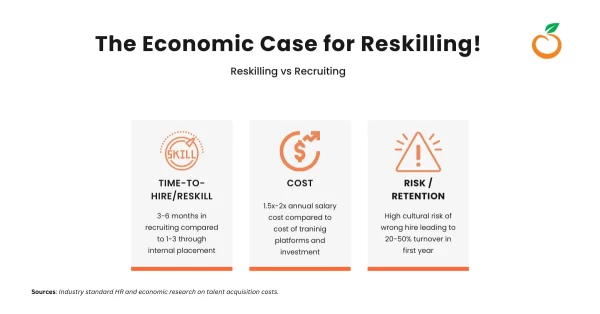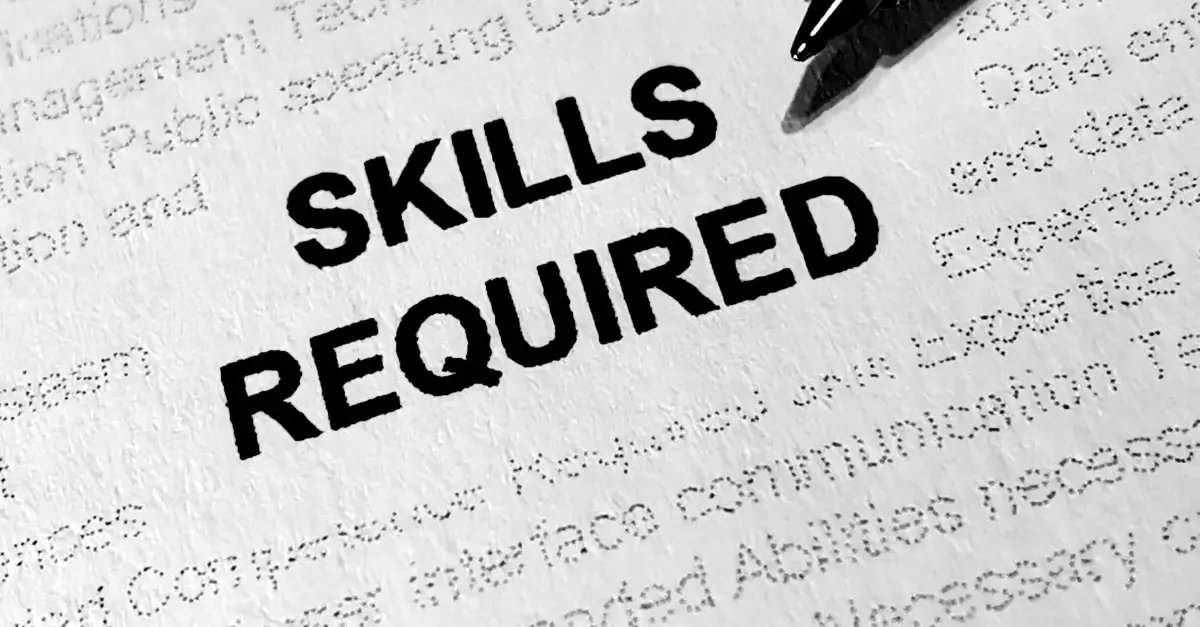The global economy stands at an inflection point. Driven by accelerating technological adoption—especially in Generative AI and machine learning—the structure of global labor is undergoing a transformation unlike any seen in decades. This is not merely a change in job titles; it is a fundamental shift in the definition of value and the required human capital. For organizations, the question is no longer if they need to prepare, but how. The answer lies in replacing outdated, static training models with a dynamic, strategic Career Development Framework (CDF).
Economic Analysis: The Tectonic Shifts Outlined in the Future of Jobs Report 2025
The World Economic Forum’s (WEF) Future of Jobs Report 2025 (as referenced by the user: WEF Future of Jobs Report 2025) delivers a critical message to chief human resource officers (CHROs) and CEOs: the half-life of critical skills is collapsing. This report provides a quantitative forecast of how automation and technological adoption will reshape roles, demanding proactive, deep investment in upskilling and reskilling to avoid paralyzing skills gap crises.
The Double Disruption: Automation and AI
The report consistently highlights two concurrent disruptions: the replacement of routine, physical tasks by automation, and the augmentation or elimination of cognitive, data-processing tasks by AI. While automation primarily affects roles in manufacturing, administration, and traditional data entry, the rise of AI is impacting white-collar work—from coding and legal research to marketing and financial analysis.
For an economist, this signals a massive friction point in the labor market:
-
Structural Unemployment: Even if new jobs are created, the displaced workers may not possess the requisite skills for these roles, leading to long-term unemployment and economic stagnation.
-
Productivity Constraint: Companies that cannot rapidly deploy employees into new, high-value roles will hit a ceiling on productivity, making their business model vulnerable to more skills agile competitors.
The core finding is that organizational stability will depend less on the size of the workforce and more on the velocity of skill acquisition.
The Velocity of Skill Decay and the Skills Gap
The rate at which existing job skills become obsolete is accelerating, creating a persistent, widening skills gap. The WEF reports frequently underscore which skills are declining in demand (e.g., manual dexterity, data input) and which are soaring (e.g., analytical thinking, creative thinking, AI and Big Data).
The data below illustrates the projected shift in demand for key skill groups, underscoring the urgency for a structured career development framework:
|
Skill Group |
Projected Average Increase in Demand (2025-2030) |
Primary Business Impact |
|
Cognitive Skills (Analytical, Creative Thinking) |
45% |
Innovation, Problem Solving, Strategy |
|
Technology Skills (AI, Big Data, Cloud) |
40% |
Digital Transformation, Operational Efficiency |
|
Green Skills (Sustainability, Environmental Management) |
30% |
Regulatory Compliance, Brand Reputation, Carbon Neutrality |
|
Socio-Emotional Skills (Leadership, Social Influence) |
25% |
Employee Retention, Team Cohesion, Customer Experience |
Source: Adapted from themes and projections consistent with the World Economic Forum's Future of Jobs Reports, including WEF_Future_of_Jobs_Report_2025.
This data does not just represent a shift in training needs; it represents a fundamental re-prioritization of human capital investment. A passive approach—simply hiring externally for new skills—is no longer viable due to the high cost and scarcity of these specialized talents. A CDF is the proactive response to this economic reality.
The Strategic Imperative: Bridging the Gap with a Career Development Framework
A Career Development Framework (CDF) is the organizational blueprint that maps current roles to future capabilities, providing employees with clear, personalized pathways for growth. It transforms the HR function from a reactive cost center into a strategic engine for workforce planning and economic growth.
CDF as an Internal Mobility Engine
The primary strategic role of the CDF is to facilitate internal mobility. When skill needs change rapidly, the ability to reskill an existing, trusted employee is infinitely more valuable than recruiting a new one. This addresses the challenge of external hiring: time, cost, and the risk of cultural misalignment.
A robust CDF provides:
-
Transparency: Employees know exactly which skills they need to acquire to qualify for the next level or a lateral role (e.g., from a Marketing Analyst to a Product Manager).
-
Personalization: Learning is not generic; it is tied to individual skill gaps and explicit career aspirations.
-
Measurable Progress: Progress toward a new role is quantified through skill assessments, SMART goals, and project assignments, making the process objective.
By demonstrating a clear path for advancement, the CDF also functions as the single most effective employee retention tool, proving to high-potential staff that their future lies within the organization.
The Economic Case for Reskilling vs. Recruiting

The economic argument for implementing a CDF is powerful.
|
Cost Element |
External Recruitment |
Internal Reskilling (via CDF) |
|
Time-to-Hire/Reskill |
3–6 months |
1–3 months (for initial placement) |
|
Cost |
1.5x–2x annual salary (recruiter fees, onboarding, lost productivity) |
Cost of training platforms + minimal internal time investment |
|
Risk/Retention |
High cultural risk; average first-year turnover is 20–50% |
Near-zero cultural risk; significantly boosts employee retention |
Source: Industry standard HR and economic research on talent acquisition costs.
This cost-benefit analysis highlights the crucial trade-off between speed and cost. While external hiring is fast for an immediate need, it is costly and high-risk. Internal reskilling, though requiring initial investment in the CDF infrastructure, provides a long-term, high-ROI solution that safeguards intellectual capital and organizational knowledge. Ignoring this balance leads to a perpetual cycle of recruiting, training, and losing talent—a financially crippling state of affairs.
Navigating the Trade-offs and Challenges of Implementation
Implementing a successful CDF requires navigating critical structural and cultural challenges, particularly concerning resource allocation and management buy-in.
Trade-off 1: Centralized Efficiency vs. Personalized Learning
The CDF must strike a balance between providing standardized, scalable learning (the efficiency demand of the finance department) and offering highly individualized, relevant paths (the engagement demand of the employee).
-
The Challenge: A CFO prefers one large, centralized contract with a generic learning management system (LMS) for cost control. However, a generic course catalog fails to address the unique skills gap between, for example, a legacy mainframe technician and a cloud architect—two roles that require a different, personalized journey.
-
The Impact: Prioritizing centralized efficiency over personalization leads to low employee engagement and high abandonment rates in training programs. Employees view the learning as irrelevant, directly impacting the CDF’s ultimate goal of driving skill acquisition. The decision-makers must consider the impact on long-term skill velocity versus short-term operational cost savings. The optimal approach is to use technology to scale personalization, not standardization.
Challenge 1: Ensuring Relevance and Accountability
The "Achievable" and "Relevant" criteria of SMART goals are critical to a CDF's success. Goal-setting must be directly integrated with the career pathways defined in the framework.
-
The Managerial Hurdle: A CDF can fail if middle management perceives it as an administrative burden unrelated to immediate productivity. If managers aren't trained to use the framework to set growth-oriented, job-relevant SMART goals, the CDF will become a passive document, not an active tool.
-
The Accountability Gap: Furthermore, for a CDF to work, the organization must commit to the resulting internal mobility. If employees acquire the skills but are blocked from internal promotion, the CDF becomes a deception, leading to mass voluntary turnover among high-potential employees—the very people the framework was designed to retain. The impact on organizational trust and the employer brand is immense. This is the importance of considering the impact on employee career progression when making resource and promotion decisions.
The solution to these challenges is the adoption of integrated, AI-powered HR technology that enforces alignment and provides transparent, quantifiable proof of progress, moving the CDF from a conceptual model to an executable system.
Operationalizing Career Development with Integrated HR Technology
The sheer complexity of managing individual skill matrices, career paths, and upskilling content across hundreds or thousands of employees necessitates a dedicated, integrated HR technology solution. This is where systems designed for modern performance management and talent development, like OrangeHRM, become indispensable (Reference: OrangeHRM Career Development).
Seamless Skill Mapping and Goal Integration
OrangeHRM’s Career Development features provide the necessary architecture for executing a strategic CDF:
-
Job and Skill Libraries: The platform houses a centralized library of job roles, competencies, and required skills. This establishes the Specific and Measurable components of the career goal.
-
Goal Alignment: It allows managers to link individual SMART goals directly to the skill requirements of a target career path. For instance, if an employee is aiming for a Senior Analyst role, the system mandates that their current performance goals align with the skills required for that position. This automatically solves the Relevance challenge.
-
Continuous Feedback and Progress Tracking: The system enables continuous, objective feedback linked to skill acquisition and goal progress, making the path to internal mobility transparent and objective. This transparency is crucial for maintaining employee trust and motivation throughout the long reskilling journey.
The Retention Dividend
By using OrangeHRM to operationalize the CDF, organizations realize a significant retention dividend. Employees feel valued and see a clear return on their investment in self-improvement. When an HR platform can seamlessly demonstrate the linkage between an employee's completed training, their updated skill profile, and their eligibility for the next internal role, the organizational culture shifts from one of stagnation to one of opportunity.
The Future of Jobs Report calls for agility; the Career Development Framework provides the map; and an integrated HR platform like OrangeHRM provides the engine and the infrastructure to move the workforce forward, ensuring the organization is prepared to meet the demands of the constantly evolving global economy.
